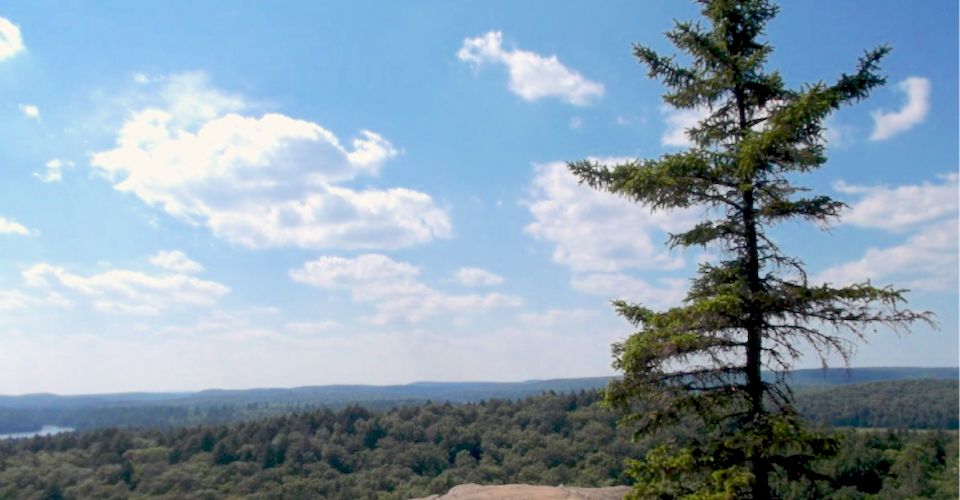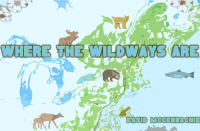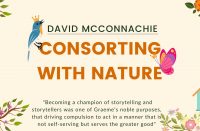With the May long weekend signalling the arrival of summer, I wasted no time leaving behind Toronto for the quiet solitude of Algonquin Provincial Park. Hiking amongst 400-year-old trees, sighting rare birds, stopping on the highway to spot moose and enjoying the call of loons on the lake helps you reconnect with the natural world and temporarily forget your problems.
With the May long weekend signalling the arrival of summer, I wasted no time leaving behind Toronto for the quiet solitude of Algonquin Provincial Park. Hiking amongst 400-year-old trees, sighting rare birds, stopping on the highway to spot moose and enjoying the call of loons on the lake helps you reconnect with the natural world and temporarily forget your problems.
Unfortunately, The Canadian Press reports “that the quiet solitude and refuge from the connected world that many Canadians yearn for will soon be no more in dozens of Canada’s wilderness zones” as Parks Canada plans for the installation of Wi-Fi hotspots at many of its parks across the country. Often our attempts at natural heritage preservation are in conflict with our modern technological society. The outcry at the closure of several provincial parks in 2012 (Andrew Reeves covered it for A\J) helped remind the government of their value to Ontarians, but the intrusion of Wi-Fi and other comforts is slowly removing us from the wilderness.
The balance between environmental protection and the economy is delicate. Despite having gutted environmental protection legislation during their term in office, on May 15th the federal Conservative government officially announced the creation of a National Conservation Plan. Critics and the opposition parties derided the announcement as lacking any details or additional funding. It is troubling that the government seeks to protect ecologically sensitive lands and waters but concurrently removed regulations and cut scientific monitoring budgets.
The federal government’s focus on resource extraction – particularly the oil sands – and the damage such projects cause diminishes any national conservation efforts. While the government claims to have secured over 4,000 square kilometres of sensitive lands since 2006, the Pembina Institute reports that “as of January 2013, oil sands mining operations have disturbed 715 km2 of boreal forest… and 4,700 km2 have been leased for oil sands surface mining operations.”
Our impact on the natural world may pre-date civilization, let alone the Industrial Revolution.
While society struggles with the conservation of natural areas, scientists in the emerging field of historical ecology ask us to define what a natural area is. Our perception of a pristine wilderness is flawed, as the land has been shaped (directly or indirectly) by humans for centuries. A 2009 article in National Geographic magazine titled Before New York used CGI to illustrate how Manhattan looked to the first European explorers in the early 17th century. The images are a stark contrast, as the modern skyline is peeled back and replaced with mixed forest, wetlands, and an abundance of biodiversity.
The question for historical ecologists is how far back in time one has to go to find a pristine environment. For example, the Manhattan Island of 1600 was already altered by First Nations people having settled in the area. The Pleistocene extinctions in North America over 11,000 years ago continues to generate controversy in the scientific community, with some scientists theorizing that the majority of megafauna species went extinct at about the same time that humans crossed into the continent from Asia. Our impact on the natural world may pre-date civilization, let alone the Industrial Revolution.
Those impacts are far-reaching: Alan Weisman’s 2007 novel The World Without Us looks decades into the future to determine long it would take for the environment to recover from our presence if we suddenly disappeared. Changes we have set in motion, such as climate change, the introduction of invasive species and the fragmentation of large mammal populations, will continue to play out over thousands of years.
The late Farley Mowat (1921-2014) understood the destruction society has inflicted on the natural world. His 1996 novel Sea of Slaughter recounted the loss of biodiversity and biomass on North America’s east coast, which is estimated by historical ecologists to have declined by 97% since record-keeping began. Likewise, in his novel The Once and Future World, J.B MacKinnon (founder of the 100-Mile Diet) introduces the concept of a “10 Percent World” – that the Earth now has “just one-tenth the natural variety and abundance” it once did. He writes:
“Everyone who has felt the call of the wild in Banff or Algonquin… all those whose awe for nature has been shaped by Henry David Thoreau or Annie Dillard or the BBC’s Planet Earth series…in the eyes of the historical ecologist, these are not precious windows into the world unspoiled [but reveal] only fragments of fragments.”
MacKinnon examined the work of psychiatrists to explain ‘shifting baseline syndrome’ where people only know of the natural environment they were born into, using that baseline as a reference for normal conditions for the rest of their lives. He postulates that with each successive generation the environment is slowly degraded but as a society we are largely oblivious to the cumulative changes. This is especially pertinent as scientists sounded the alarm this week that we are entering a new mass extinction event. A recent study in the journal Science has found that the extinction rate of plants and animals is 1,000 times faster than the normal background.
As I sat on a scenic lookout in Algonquin, all of these thoughts churned in my mind. Looking at the forest beneath me, I tried to remember that its current form is a result of logging that took place over a hundred years ago (logging still continues today in Algonquin, although fewer than 14% of Ontarians know it.) The areas we now consider most pristine are in fact shaped by humans, whether directly through logging or indirectly through phenomena like climate change and acid rain.
National politics concerning conservation of the natural environment need to address how we will reduce our impacts moving forward. A positive ‘shifting baseline’ and an increase from our degraded “10 Percent World” must be a goal of sustainability, or we risk sliding further into the abyss. The work of historical ecologists is vital to our understanding of the natural world and serves as a reminder of what we’ve already lost, and what can be gained through environmental protection and appreciation.
Dan is an environmental professional currently living in Toronto. Dan has previously published in Municipal World and Environmental Science and Engineering. He specializes in energy, transportation, and climate change policy, corporate sustainability, and environmental planning and assessments. He recently completed a Masters of Environmental Applied Science and Management at Ryerson University and has a Bachelors' degree in Environment and Business from the University of Waterloo.













